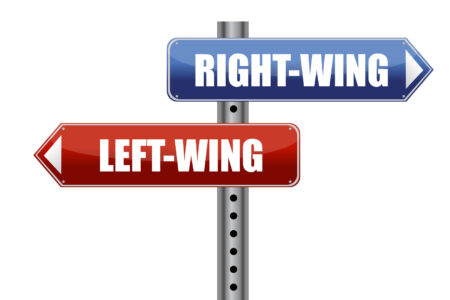
The dark side of branding must be reined in. New rules are needed to contain nefarious behaviour and curtail the most despicable acts. In Democratizing the Constitution: Reforming Responsible Government, Peter Aucoin, Mark Jarvis, and Lori Turnbull argue that proposals for democratic reform in Canada must establish clear objectives, place formal constraints on prime ministerial power, provide mechanisms for the House of Commons to enforce the reform, and entrench the power of MPs in both majority and minority governments. Within this framework, they present some specific suggestions for reforming the Canadian Constitution, the executive, the legislature, and political parties. Their ideas are concerned with curtailing the power of the political centre of government, such as increasing the threshold for dissolving the legislature by requiring the support of two-thirds of MPs. Further suggestions for reform are found in Tragedy in the Commons: Former Members of Parliament Speak Out about Canada’s Failing Democracy, authored by the co-founders of Samara, a Toronto-based non-profit organization that seeks to improve Canadian democracy. Their recommendations surround the professionalization of what amounts to schoolyard behaviour. Written questions provided in advance of Question Period, orientation sessions and job descriptions for MPs, increased transparency of political party business, and an improved role for MPs as brand ambassadors are just some of the ideas mentioned based on their interviews with former MPs. Inevitably, they concede that a cultural shift is required to set the stage for significant change. Both works are a good basis for initiating dialogue on what would amount to a seismic shift in Canadian political life.
The first attempts at curtailing the worst aspects of political branding must balance audacity with plausibility and look beyond partisanship and personalities. Above all, what must be limited is the publicity state’s contribution to the fusion of party and government brands. The conflation of state and party symbols, and the use of public resources for political communications purposes, run counter to the democratic principle of detachment of party business from public administration. In comparison, little can be done to prevent brand evisceration or reclamation, part of the normal ebb and flow of changing administrations. A number of possibilities to curtail statecraft rebranding and other forms of public sector branding are identified in the following pages. They follow the advice of Aucoin, Jarvis, and Turnbull to identify the objective of the proposed reform and a mechanism to give power to the people’s elected representatives to enforce it.
Increasing professionalism: More ethical public sector communications
Have Parliament regularly update the government of Canada’s communications policy. The government’s communications policy should be regularly reviewed by Parliament to reflect changing circumstances and evolving communications technologies. A number of issues raised in this book should inspire a further update, planned by the Trudeau Liberals. The government should not use advertorials. Government communications, including the promotion of public policies or programs for which parliamentary or intergovernmental approval is pending, should not proceed until a motion is passed by the House of Commons pertaining to the specific item to be publicized. Visuals of members of cabinet should not appear on government homepages, with some exceptions, such as pm.gc.ca. The government of Canada and its institutions should not be referred to by anything other than their formal names in communications products. Government buildings should not be named after former party leaders. Journalists should expect a response within a certain time period; however, it should be specified that faster responses are possible when questions are submitted with considerable notice and during normal business hours. The communications policy should be subject to scheduled reviews and approval by a multiparty committee of parliamentarians. An officer of Parliament should monitor implementation of the policy.
Create a political communications code of ethics. A voluntary code of practice about political marketing should act as a moral compass for political actors who have different interpretations of the boundaries of freedom of speech. Industry codes of behaviour, such as the Canadian Code of Advertising Standards and the Canadian Marketing Association Code of Ethics, are insufficient since they all but exempt politics. A political communications code of ethics would form the basis of stimulating dialogue on what is acceptable behaviour. It would spell out the privacy safeguards associated with database marketing, what sort of negativity is beyond the pale, when it is fair game for politicians to critique those who stand in their way, to what extent they should have access to media footage of opponents, when a controversial remark warrants sanction irrespective of the brand ambassador’s position, and so on. Such a code would apply public pressure on political parties and interest groups to sign on. A code of practice would raise the bar while tempering the outcries of idealists, putting us on the path to more civil discourse. It would be the basis of a normative assessment of the actions of American-style political action committees, an emerging force in Canada. The nonpartisan code should be developed by a broad consortium of practitioners and specialists who would work toward securing the endorsement of all major political parties. It would be periodically updated to reflect changing norms. Over time, Parliament would ideally come to recognize the code and participate in scheduled reviews of it.
Eliminate financial support for debranding. Highlighting problems with an opponent’s candidacy, platform, and claims is one thing; denigrating leaders on a personal level is quite another. Excessive negativity and debranding are harmful to civic discourse and public engagement in a democratic system of government. Canadians should not unknowingly subsidize the worst forms of debranding. Political fundraisers ought to be legally required to obtain donor consent for a donation earmarked for advertising that is foremost negative. Such donations should be subject to a less generous tax refund scheme. Post-election financial returns should itemize advertising spending associated with personal attacks, which should qualify for a lower rate of refund to the party or candidate. This would result in political parties maintaining two separate war chests and being choosier about negativity. Parliamentarians who distribute debranding materials with harsh personal slights paid for through their office budget allotments should be required to repay the amounts as well as receive a temporary suspension from the privilege. The adjudication of what constitutes unacceptable forms of debranding should be the responsibility of a non-partisan review board that reports to Parliament.
Depoliticizing government communications: Inhibiting the fusion of party and government brands
Prevent political parties from using the official colours of the government of Canada. The convergence of party, prime ministerial, and government brands is perhaps the most significant concern raised in this book. Brand fusion intensifies centralization, undermining confidence and trust in political and public institutions. The brand markers of the government must be state-like and above repute so that integrity is preserved regardless of which political party or prime minister is in power and irrespective of public opinion about personalities.
The provision in Ontario’s Government Advertising Act that government advertising is partisan if it “includes, to a significant degree, a colour associated with the governing party” is a starting point in that it recognizes that colour schemes are loaded with political meaning. Regardless of which party is in power, all government of Canada visual communications should always be based on a red-and-white colour palette. This is practical only if the official colours and symbols of the government cannot be co-opted by any political party. To avoid perceptions of partisanship, the government of Canada and its institutions must have a monopoly on using the official colours of the government, the Canadian flag, and the red maple leaf symbol. No political party in the federal arena should use a red-and white colour scheme in its marketing communications. Whenever a maple leaf is used in visual communications by political organizations, that icon should be any colour other than red.
The Elections Act should be amended to prohibit tax-deductible status and financial payments from the government to any political party whose logo, advertising, website, signage, or other visual communication uses mostly red and white. Funds should be withheld if any political party uses a red maple leaf. To help established political parties — particularly the Liberal Party of Canada — with the transition to new marketing collateral, a generous one-time financial payment should be extended to help defray costs incurred from market research, graphic design, and production of new materials. To the extent possible, these amendments should be approached in a non-partisan manner when they are debated in Parliament. Such provisions must be designed to withstand a Charter of Rights and Freedoms court challenge.
Require that the official red and white colours of the government of Canada be used in its communications. If steps are taken to depoliticize the use of red and white, then, for good measure, the communications policy of the government of Canada should be amended to prohibit government from using other colours, in particular the main colour(s) associated with the government party. Those colours are identified in the logo filed with Elections Canada and campaign materials in the preceding election. Materials sent from parliamentarians’ offices, such as ten percenter flyers, householders, and calendars, should not be permitted to use colours normally associated with a political party. These amendments should be part and parcel of a parliamentary debate about the role of colour use in brand fusion.
Issue annual reports about government spending on photo-ops. The federal government issues annual reports on advertising and public opinion research. To capture a fuller understanding of government communications spending on publicity, and as a measure of accountability, regular financial reports should be prepared concerning media pseudo-events. This includes proactive disclosure of costs such as signage, room rental, audiovisual equipment, travel, photography, and other extraordinary non-fixed expenses for special communications events such as photo-ops, speeches, or videos. In lieu of a customized measurement vehicle such as the Advertising Campaign Evaluation Tool, the financial outlay for pseudo-events should be balanced with an estimate of the financial value of the earned media. The reports should be presented by the minister of public works to Parliament each fiscal year.
Create a checklist to assess government advertising. There is a need to reduce the politicization of government advertising as well as unwarranted claims of partisanship, both of which erode trust in government institutions. There is no obvious solution to limiting the ability of cabinet to commandeer public resources for partisan-like communications. As long as the political government can originate advertising on policy priorities of its choosing, little can reasonably be done to turn a sales-oriented approach into a product-oriented one. The partisan nature of the creative content of the ads is also in the eye of the beholder, making the vetting process a potentially subjective rather than an objective exercise. As with EAP [Economic Action Plan] advertising, short of being able to spot a party logo, little explicit evidence of partisanship can be policed, and the WOG [whole of government] approach to advertising is not necessarily a problem. In the short term, a non-partisan group such as Samara should research, create, and maintain a user-friendly and publicly accessible government advertising checklist. The checklist would enable anyone to readily assess whether a government ad is excessively political or partisan. It would expand on the basic framework of the Ontario Government Advertising Act. If this checklist were adopted by Parliament, it would perform a public accountability function and inject some objectivity into claims of partisan communication. It would pressure government to exercise greater caution while freeing it from opponents’ constant alarmism. This would be a step toward adopting a more robust review process of advertising than has been proposed by the Trudeau government.
Turning lapdogs into watchdogs: Empowering public guardians
Create media guidelines. News coverage of Canadian politics involves too much politainment and precious little public policy analysis. There is brinksmanship between political parties and the media on all manner of topics. More broadly there is excessive celebritization, pseudo-scandal, and the treatment of politics as a sporting event. The media has its reasons, and not all journalists fall into this trap. In a democratic society, the freedom of the press is sacrosanct — and yet without intervention into media logic (discussed in Chapter 3) the quality of democracy in the branding age is suspect.
One mechanism to encourage good coverage is the creation of media guidelines by academics identifying what the political media ought to voluntarily prioritize. Guidelines might promote the ideal that the media should strive to deliver information about government and political parties without applying a slant and without the trappings of market journalism. Editorializing and politainment ought to be confined to forums such as panel shows and opinion pieces so they can be differentiated from news reporting. Journalists and news editors should be encouraged to see past personality politics and to periodically explain to their audiences how the Canadian system of government works. These sorts of ideals would require a collaborative effort between interest groups committed to good governance and media organizations in conjunction with service standards in the government’s communications policy. Media guidelines passed as a non-binding motion by academic organizations could build on the CBC’s journalistic mission and the Canadian Association of Journalists’ ethics guidelines. This sort of rethinking is necessary to combat the message control of public sector branding by making it less likely for government officials to be fearful of media agendas.
Empower and legitimize the Senate. There is no getting away from the forces of branding that require message symmetry among members of the executive and legislative branches. Ideas to increase the power and independence of members of the House of Commons are problematic given the communications pressures on ministers and members of Parliament to act as mouthpieces for their political parties. It remains to be seen whether the Reform Act or reforms promised by the Trudeau Liberals (see this book’s Preface) will have chops. A more ambitious way to limit the power of the prime minister and cabinet is to change the Senate itself so that it acts as a legitimate counterbalance to the brand discipline of the House of Commons. The theory that responsible government places power in the hands of the people’s representatives in the lower house is antiquated in a world where communications technology enables and pressures conformity. Whereas only the attentive public concerns itself with the procedural nuances of the House of Commons, the average Canadian can instinctively recognize the undemocratic nature of the Senate. A democratized Senate would provide a second forum for representative government. The public demand for that outdated institution to hold the political executive and permanent government to account grows with the diffusion of communications technology.
Senate reform is such a long-standing issue in Canadian politics that in the 1960s the topic was written off as “merely a plaything of parties.” In recent years, the outrageous spending by a number of senators, in particular Mike Duffy, has galvanized public opinion that something must be done. However, the possibility of reform is slim as long as there is division over the most viable way to modernize Parliament. Academic discussion on restructuring the Senate has fallen out of favour as scholars and democracy advocates focus on the House of Commons and the electoral system. The ivory tower punditry seems to have little effect on political parties and MPs, with the important exception of Chong’s bill. It is the Senate that a sizable majority of Canadians want to see changed, but there is no consensus on how to proceed. Prime Minister Harper went through extended periods without making Senate appointments, and he required that new appointees support his efforts to limit their terms and require election. The Conservative administration referred the constitutional nuances to the Supreme Court of Canada, which ruled in 2014 that support from both federal chambers and seven provinces representing half of the Canadian population (known as the 7/50 amendment formula) is required for the federal government to implement senator elections and/or term limits. The New Democratic Party’s long-standing position is that the Senate should be abolished, a sentiment periodically advocated by some premiers, including Brad Wall of the Saskatchewan Party. This is implausible because the SCC ruled that abolishing the Senate requires the unanimous consent of both federal chambers and all provincial legislatures; moreover, doing so would only concentrate more power in the hands of the prime minister and courtiers. For his part, in 2014 Trudeau dramatically expelled all senators from the Liberal Party’s caucus to create a symbolic division between members of the two chambers. As prime minister, he plans to depoliticize the appointment process. There is thus widespread agreement that something must be done about the Senate and disagreement about what must be done. Trudeau is unwilling to reopen constitutional debate, so it will be up to others to take a united stand on reform to turn the political plaything into a meaningful mechanism to limit brand power.
Suffice it to say that the brand’s clutch means that, in addition to the old chestnuts of creating an equal, elected, and effective Senate, there must be institutional measures to loosen the communications control of party elites. The Senate tends to be populated by some of the governing party’s most active brand ambassadors. They are not sufficiently accountable, and members constitute an exclusive club of individuals with connections to the current or recent prime minister(s). The Senate must elevate the importance of regional/local priorities over those of a senator’s party or its leader. Its members must somehow be elected on a staggered electoral cycle not always twinned with general elections of MPs, and perhaps not be permitted to campaign as affiliates of a political party. Only through such change will senators gain public legitimacy to act as a check on the House of Commons and constrain prime ministerial power. To ensure responsible government, reforms would need to prohibit senators from jointly being members of the executive branch and a political party’s caucus. Parliamentary reformers such as Peter Russell, who argues that the House of Commons must take on the role that the Senate was originally intended to perform, must establish consensus. Whatever the pathway, observers of Canadian parliamentary government should take a page from the public sector branding playbook and speak with a united voice to repeat a simple, consistent message of what must be done about the upper chamber. Divergence must become convergence on the matter of parliamentary reform if anything is to happen.
Excerpted with permission from Brand Command: Canadian Politics and Democracy in the Age of Message Control, by Alex Marland (Vancouver and Toronto: UBC Press, 2016). For an interview with Alex Marland, see the PO Podcast.
Do you have something to say about the article you just read? Be part of the Policy Options discussion, and send in your own submission. Here is a link on how to do it. | Souhaitez-vous réagir à cet article ? Joignez-vous aux débats d’Options politiques et soumettez-nous votre texte en suivant ces directives.









